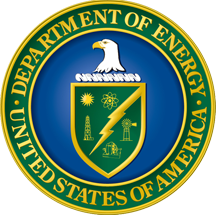Experimental and numerical investigation of melting of NePCM inside an annular container under a constant heat flux including the effect of eccentricity
Journal Name: International Journal of Heat and Mass Transfer
Volume: 67
Issue: 0
Page: 455–468
Year: 2013
List of Authors:
Nabeel S. Dhaidan , J.M. Khodadadi , Tahseen A. Al-Hattab, Saad M. Al-Mashat
Abstract
Melting of nano-enhanced phase change materials (NePCM) inside an annular cavity formed between two circular cylinders is investigated experimentally and numerically. The inner cylindrical tube is subjected to a constant heat flux, while the outer shell is thermally insulated. The phase change material (PCM) used is n-octadecane that is dispersed with CuO nanoparticles as thermal conductivity enhancer
(TCE). The experiments involved recording of temperatures at different radial and angular locations inside the test cell, thus allowing for tracking the progress of the melting front under various rates of heat flux and multiple nanoparticle concentrations. The finite element approach is applied to solve the simultaneous
governing equations computationally. The computational model is validated and the results
showed a good agreement with previous related work. Furthermore, the agreement between the experimental and simulated results is reasonable. The effects of the nanoparticle concentration and the amount of applied heat flux (Rayleigh number) on the melting process are examined. The characteristics of the melting process are described by temperature of NePCM, progress of the shape of the solid–liquid interface, melting rate, melt fraction and charging time. The experimental and numerical results reveal that
there is an improvement in melting characteristics with the emulsion of more nanoparticles in PCM (intensifying the effective thermal conductivity) and raising the wall heat flux and the corresponding Rayleigh number (augmenting the role of natural convection). This enhancement in the melting process can be indicated by increasing the melting rate which leads to acceleration of the melting time. In early stages, melting is driven by conduction heat transfer identified by concentric isotherm patterns, high melting rate and lack of fluctuations in temperature data. As time progresses, natural convection will develop and increase the melting rate in the top half of the annulus with high rate of temperature fluctuations
and thermal instabilities. On the other hand, melting at the bottom region is characterized by
diffusion and thermal stability in liquid melt where no temperature oscillations are recorded. The melt fraction, melting rate and rate of enhancement in charging time are improved with the increasing of the Rayleigh number. Additionally, the rate of acceleration in melting is comparably high for low nanoparticle
concentration and it will degrade as the amount of nano-additives increases as the augmentation
in viscosity, agglomeration and precipitation may outweigh the enhancement in thermal conductivity.
The simulated findings exhibit that the subcooling has a negative effect on the melt fraction, solid–liquid interface progress and time required to complete melting. This effect is insignificant at higher supplied heat flux or higher values of Rayleigh number. Finally, the impact of eccentricity by lowering the center
of the inside heated tube is also evaluated. The predicted results show that the eccentric mode has higher melt fraction in comparison with the concentric arrangement.
